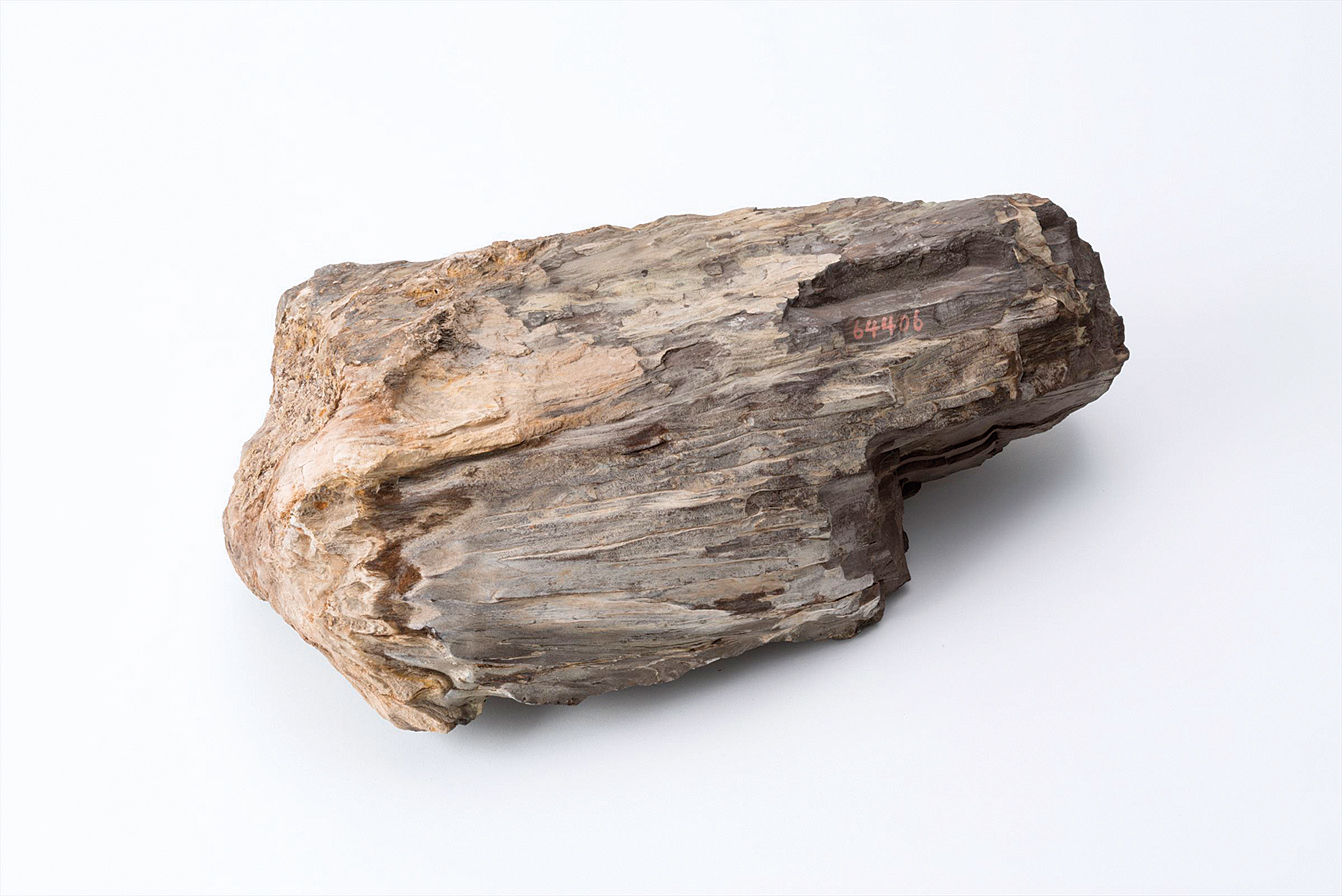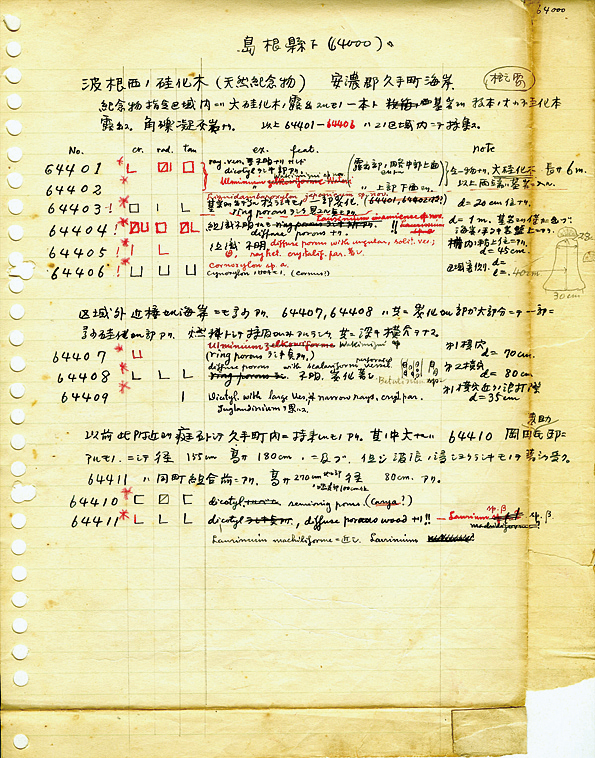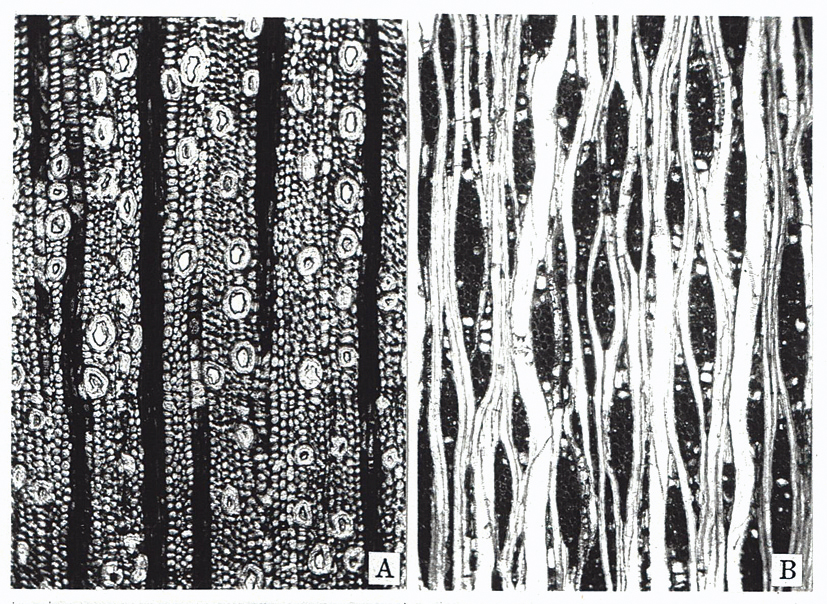B20
Silicified (Petrified) woods
Cornus simanense, a fossil species described by Prof. Shunji Watari
In Japan, the Green Tuff Region, aged at the Miocene, the Tertiary in the Cenozoic era, is widely distributed. It contains considerable depostits of fossil woods, which are important for clarifying changes in the forest vegetation and flora of the Japanese Archipelago. The late Professor Shunji Watari (1906–1993) studied silicified (petrified) woods along the seacoast of Shimane Prefecture in 1941. One of his samples of fossil wood, no. 64406, was published as a new species, Cornoxylon simanense in 1948 (Watari 1948). He later changed the genus to Cornus (Watari 1952). It took seven years for publication after he obtained this sample. One of the reasons was due to the social circumstances (World War II, and the disturbances after the war). Another was the difficulty in determining the taxonomic position of the sample.
Prof. Watari provided a sound foundation for research on fossil woods in Japan with the wide range of his research area (from Hokkaido to Kyushu) and breadth of geological time scale (from the Jurassic to the Quaternary). Many silicified woods have been designated as natural treasures in Japan, many of which were identified by Shunji Watari. (Mitsuo Suzuki)
References
Watari, S. (1948) Studies on the fossil woods from the Tertiary of Japan. V. Fossil woods from the Lower Miocene of Hanenishi, Shimane Prefecture. Japanese Journal of Botany 13: 503–518.
Watari, S. (1952) Dicotyledonous woods from the Miocene along Japan-sea side of Honshu. Journal of the Faulty of Science, the University of Tokyo, Sect III (Botany) 6: 97–134.



